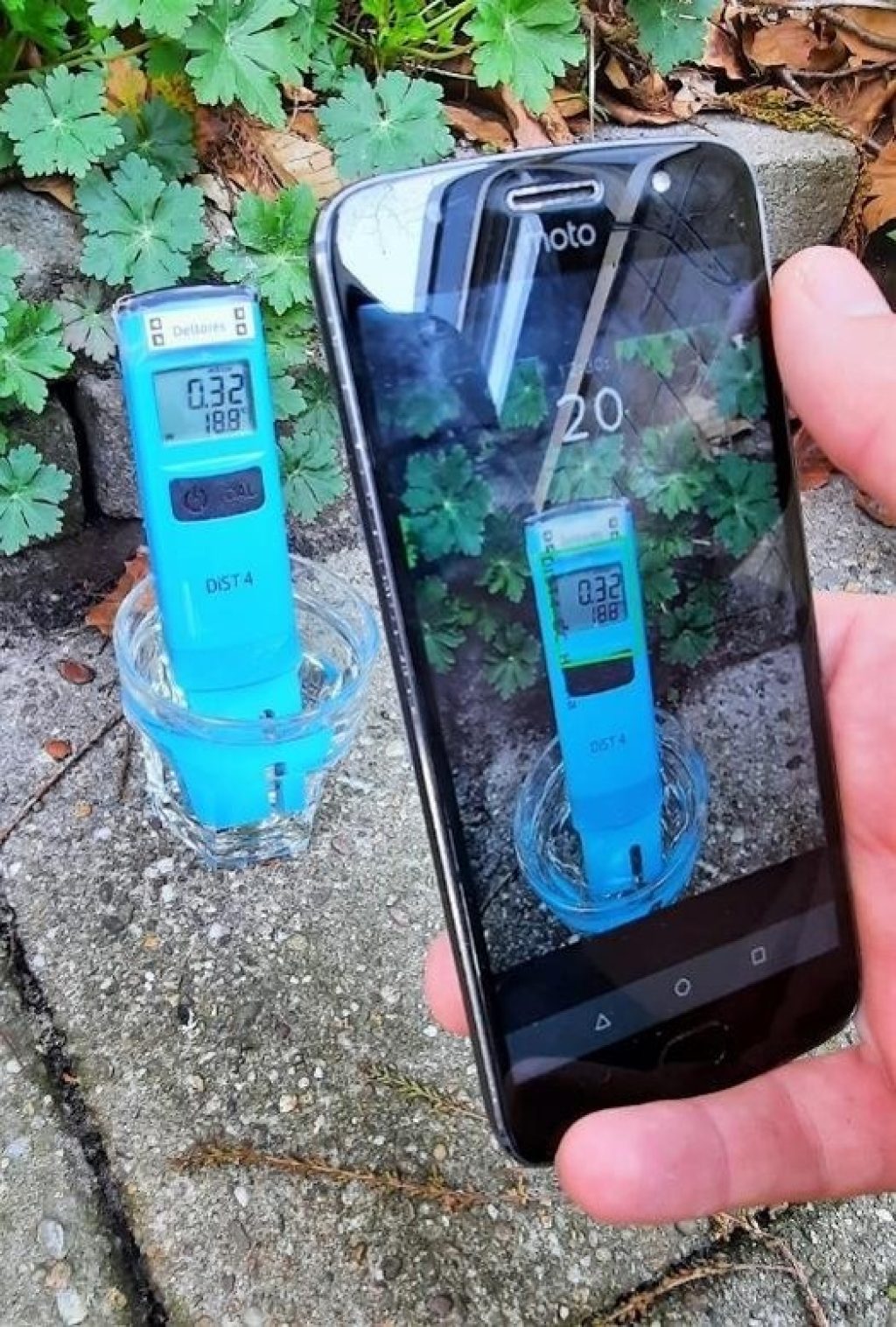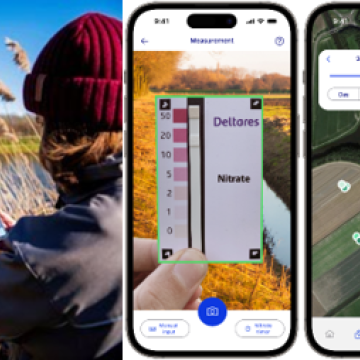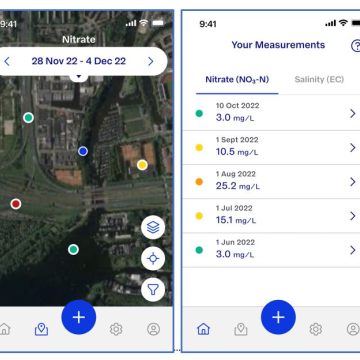Aquality App: measure nutrients and salinisation yourself
With this free smartphone application, collecting your own measurements of salt and nutrients (nitrate, ammonium, phosphate) in water and of nitrogen levels in soil is a piece of cake. The app makes scans and analyses, and produces results instantly. The user also has the option in the app to make that data public or share it in a protected group.
Download the App
Webviewer and download data
Measuring nitrate
It is above all in farming areas – where some of the fertiliser used is washed out – that nitrate concentrations are elevated. But high concentrations are also found in urban areas or in discharges from water treatment plants. You can’t see, smell or taste nitrate. In surface water, it causes algal blooms that result in green, malodorous, toxic water with no oxygen.
High nitrate concentrations in drinking water can harm health, for example in the form of an increased risk of colon cancer. The Aquality App makes it possible to analyse surface water, drain water and groundwater, to track down nitrate sources and hot spots, and to test the impact of measures. So the app will be particularly welcome for people working professionally with water quality such as farmers, water authorities or water companies.
The Aquality App helps to map out salinisation and nutrient losses at the plot level. Farmers and water managers can use this information to select the right measures and then also use the Aquality App to monitor whether those measures are actually effective.
The Aquality App helps to map out salinisation and nutrient losses at the plot level. Farmers and water managers can use this information to select the right measures and then also use the Aquality App to monitor whether those measures are actually effective.
Joachim Rozemeijer, soil and groundwater quality specialist
Measuring salt levels

The Aquality App can be used to measure salinisation. The App scans the result of an EC meter (EC – electrical conductivity – is a measure of salinity in a solution). It is important to monitor salt concentrations because of possible damage to crops. During dry periods, water can be taken from ditches or groundwater for irrigation but it must be fresh enough. By scanning a Hanna Dist4 EC meter, it is possible to store and share measurements in the Aquality App.
With the EC meter – a device that is straightforward to use – you can map out salt concentrations in the water regularly, and preferably, at fixed locations. All the measurement data are collected and displayed in a public or protected database. They provide a picture of where steps need to be taken to make the water fresher.
Measuring soil Nmin: the Dopper method

Deltares and NMI-agro have developed a DIY protocol for indicative measurements of mineral nitrogen (Nmin) levels in soil using the Aquality App. Farmers can use it to measure the Nmin in their fields themselves and to estimate better how much nitrogen fertiliser is needed. After the harvest, they can measure how much mineral nitrogen is still in the soil. Most of this Nmin residue will be lost during the winter season through leaching to groundwater and surface water. By monitoring Nmin levels regularly, farmers can minimise this residue and the nitrogen losses.
A representative soil sample must be taken first to measure soil Nmin. This is usually done by taking a mixed sample from multiple borings on a plot for the standard depths of 0-30, 30-60 and/or 60-90 cm. We use a Dopper drinking bottle and a kitchen scale to mix the soil sample with water in a fixed ratio. After vigorous shaking, we use a piece of tissue paper to suck up a clear sample from the Dopper. A drop from the paper is then squeezed out onto a nitrate strip and the nitrate concentration can be measured with the Aquality App. The App converts this concentration into the Nmin level in the soil.
Measuring ammonium and phosphate concentrations
Ammonium (NH4) and phosphate (PO4) are nutrients that can be released from both fertilisers and natural organic matter. Measured concentrations of ammonium and phosphate can be easily entered and stored manually in the Deltares Aquality App. A range of test kits are available for measuring ammonium and phosphate concentrations in water. We recommend the Hanna checkers for use in combination with the Aquality App.





